Abstract
Manohar, M. (University of Minnesota, St. Paul), S. Kumar, and R. K. Lindorfer. Heat reactivation of the α-hemolytic, dermonecrotic, and lethal activities of crude and purified staphylococcal α-toxin. J. Bacteriol. 91:1681–1685. 1966.—Crude staphylococcal toxin loses its α-hemolytic activity more rapidly at 60 than at 100 C. This paradoxical behavior has been postulated to be due to the presence of a thermolabile inhibitor in crude toxin. This work provides experimental evidence for the presence of a thermolabile “protective inhibitor.” This substance(s) protects the α-toxin against destruction at 60 C, yet simultaneously inhibits the hemolytic activity of α-toxin under the same conditions. Of greater importance, this work also demonstrates that the dermonecrotic and lethal activities of crude toxin are inactivated and reactivated in parallel with the α-hemolytic activity. Crude staphylococcal toxin possessing a high α-hemolytic titer when heated to 60 C for 30 min lost its α-hemolytic, dermonecrotic, and lethal activity. However, when this same toxin was immediately exposed to 100 C, a remarkable simultaneous reactivation of all three of these activities occurred. Contrariwise, electrophoretically purified α-hemolysin, which also possessed dermonecrotic and lethal activity, showed no reactivation under these conditions, thus demonstrating that reactivation is due to a substance(s) distinct from the α-toxin. The fact that α-hemolytic, dermonecrotic, and lethal activities were inactivated at 60 C and simultaneously reactivated at 100 C provides additional proof that these activities are all associated with one toxic component. The probability is remote that three separate entities would exhibit the same rate of inactivation and the same strange reactivation.
Full text
PDF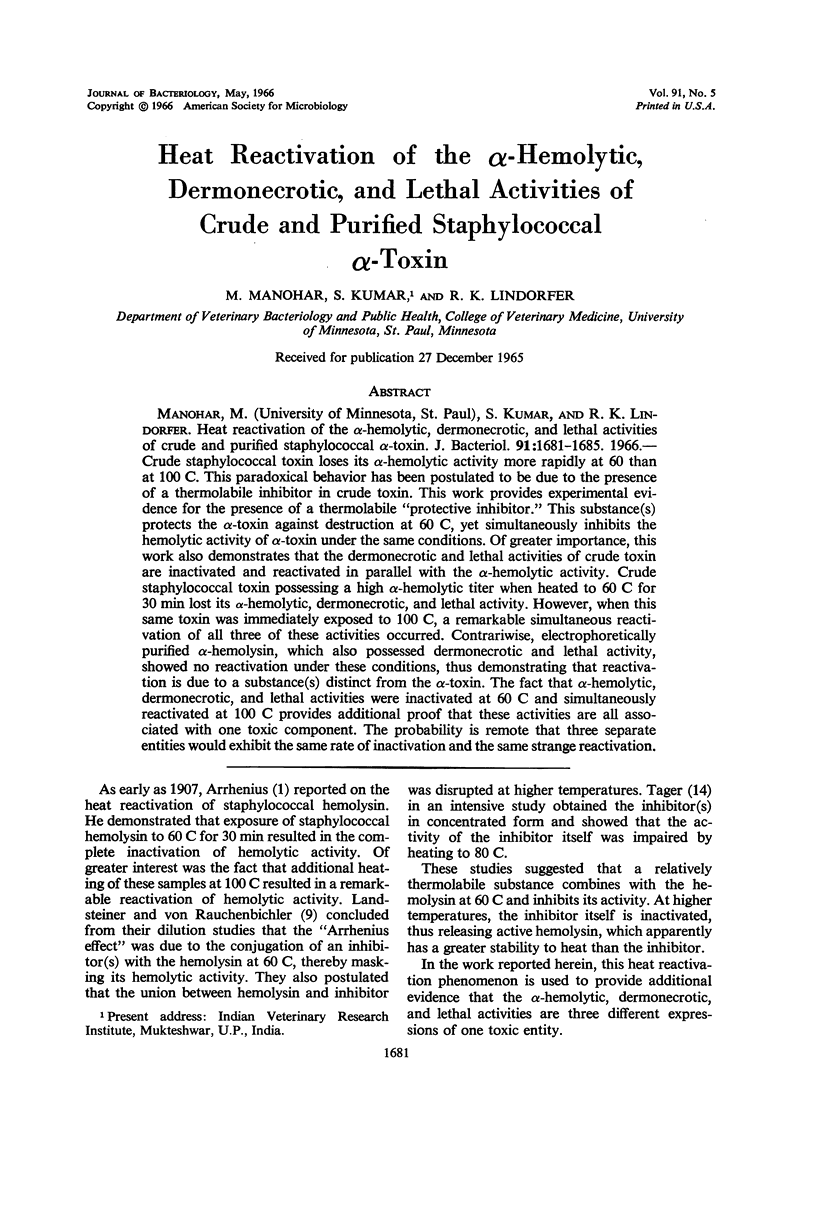
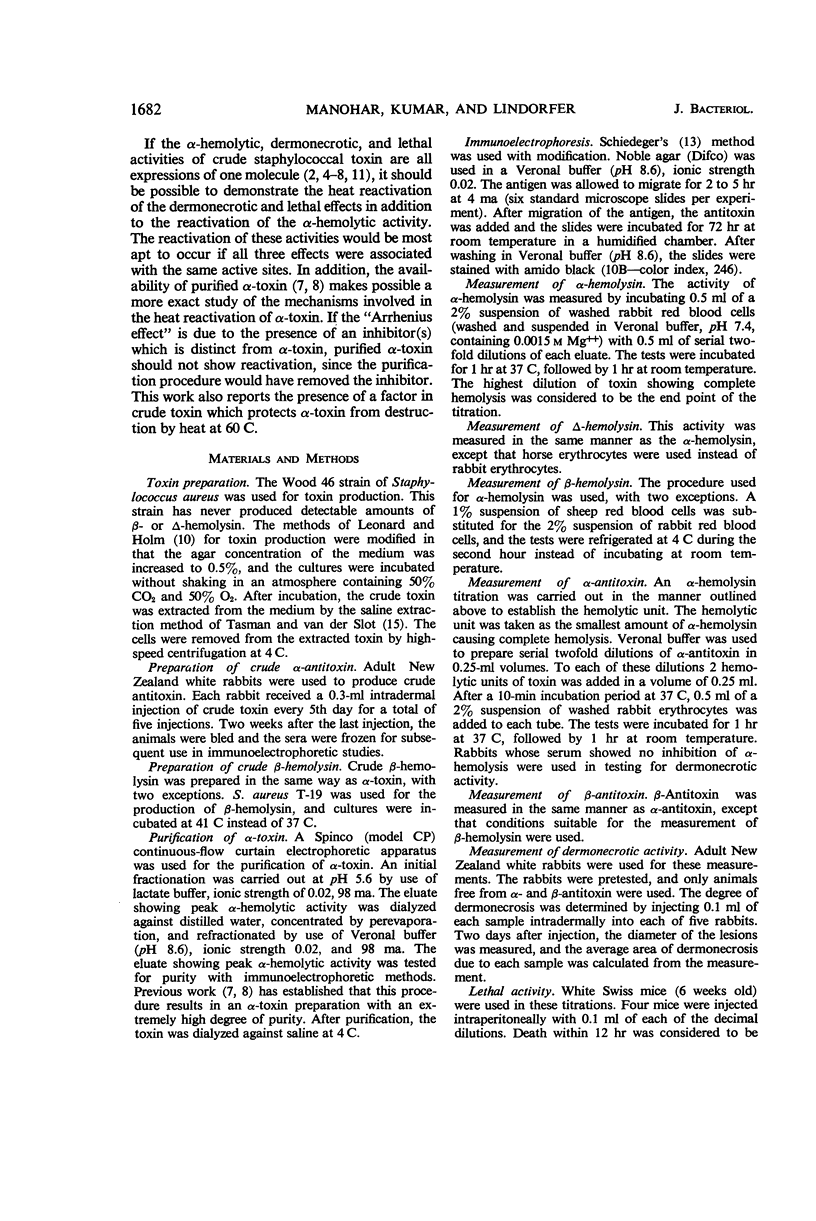
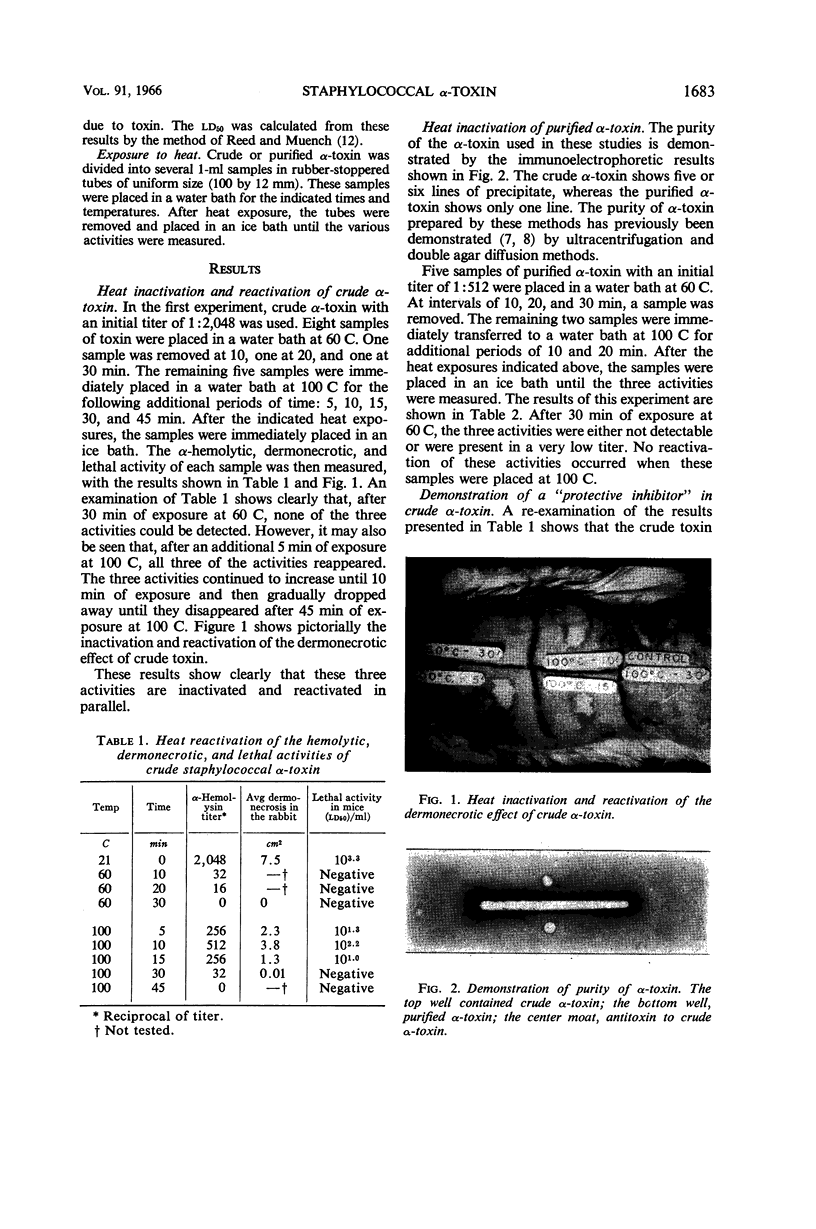
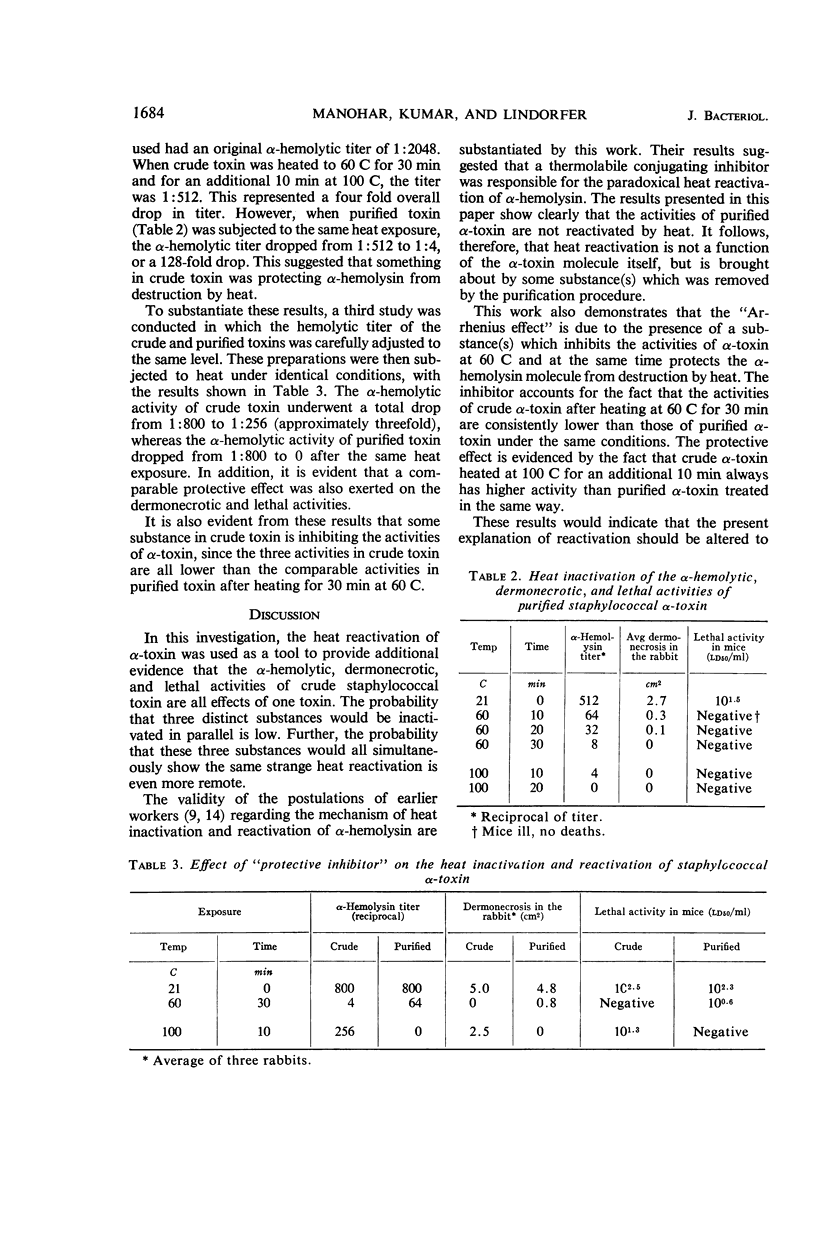
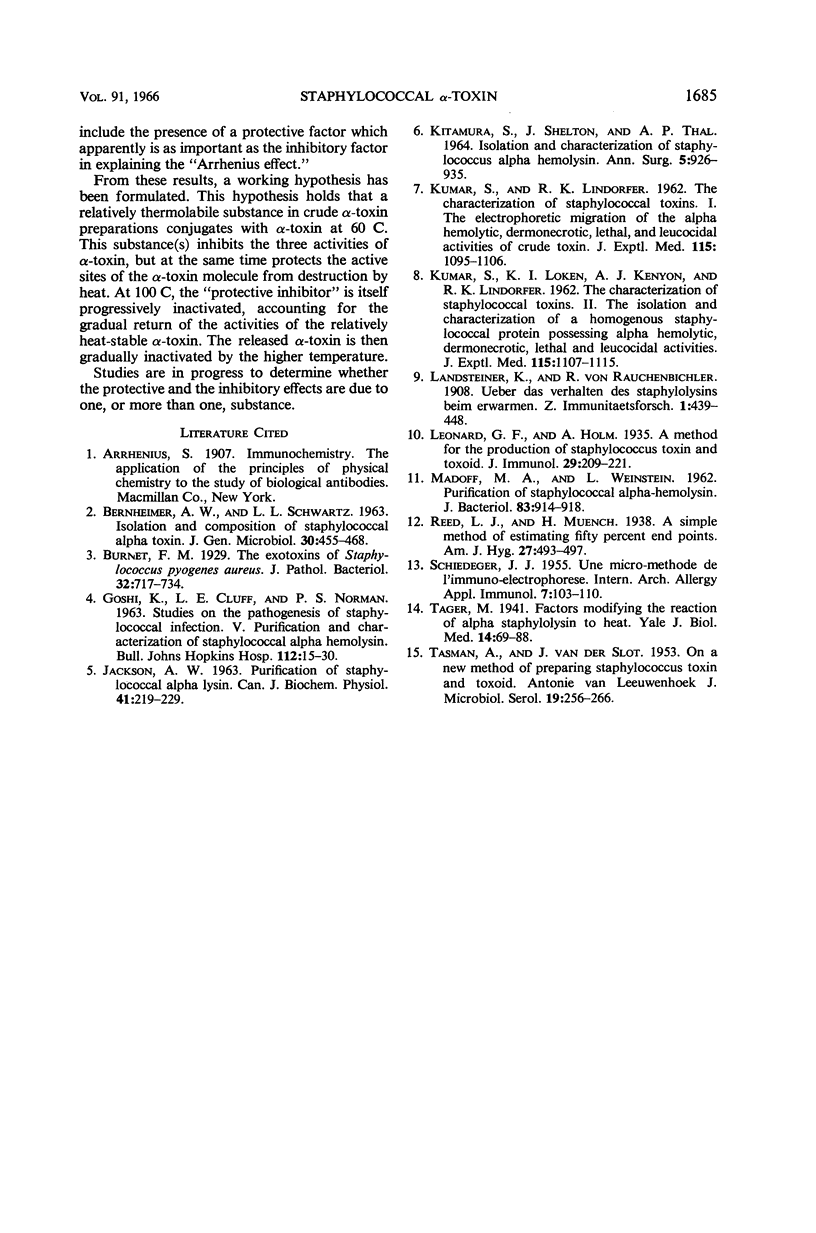
Images in this article
Selected References
These references are in PubMed. This may not be the complete list of references from this article.
- BERNHEIMER A. W., SCHWARTZ L. L. Isolation and composition of staphylococcal alpha toxin. J Gen Microbiol. 1963 Mar;30:455–468. doi: 10.1099/00221287-30-3-455. [DOI] [PubMed] [Google Scholar]
- GOSHI K., CLUFF L. E., NORMAN P. S. Studies on the pathogenesis of staphylococcal infection. V. Purification and characterization of staphylococcal alpha hemolysin. Bull Johns Hopkins Hosp. 1963 Jan;112:15–30. [PubMed] [Google Scholar]
- KITAMURA S., SHELTON J., THAL A. P. ISOLATION AND CHARACTERIZATION OF STAPHYLOCOCCUS ALPHA-HEMOLYSIN. Ann Surg. 1964 Nov;160:926–935. doi: 10.1097/00000658-196411000-00023. [DOI] [PMC free article] [PubMed] [Google Scholar]
- KUMAR S., LINDORFER R. K. The characterization of staphylococcal toxins. I. The electrophoretic migration of the alpha hemolytic, dermonecrotic, lethal, and leucocidal activities of crude toxin. J Exp Med. 1962 Jun 1;115:1095–1106. doi: 10.1084/jem.115.6.1095. [DOI] [PMC free article] [PubMed] [Google Scholar]
- MADOFF M. A., WEINSTEIN L. Purification of staphylococcal alpha-hemolysin. J Bacteriol. 1962 Apr;83:914–918. doi: 10.1128/jb.83.4.914-918.1962. [DOI] [PMC free article] [PubMed] [Google Scholar]
- TASMAN A., VAN DER SLOT J. On a new method of preparing staphylococcus toxin and toxoid. Antonie Van Leeuwenhoek. 1953;19(3):256–266. doi: 10.1007/BF02594852. [DOI] [PubMed] [Google Scholar]




